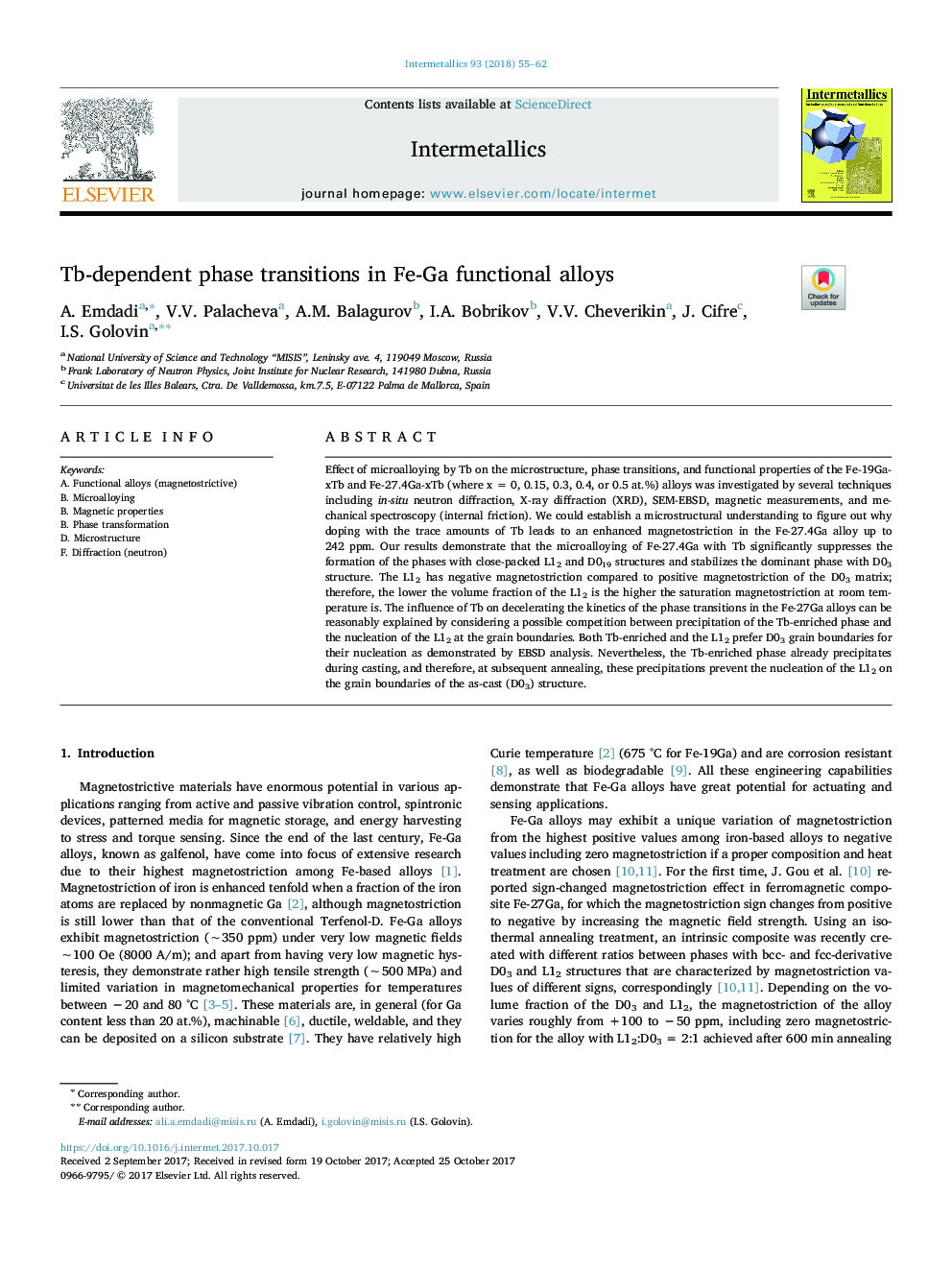| Article ID | Journal | Published Year | Pages | File Type |
|---|---|---|---|---|
| 7988400 | Intermetallics | 2018 | 8 Pages |
Abstract
Effect of microalloying by Tb on the microstructure, phase transitions, and functional properties of the Fe-19Ga-xTb and Fe-27.4Ga-xTb (where x = 0, 0.15, 0.3, 0.4, or 0.5 at.%) alloys was investigated by several techniques including in-situ neutron diffraction, X-ray diffraction (XRD), SEM-EBSD, magnetic measurements, and mechanical spectroscopy (internal friction). We could establish a microstructural understanding to figure out why doping with the trace amounts of Tb leads to an enhanced magnetostriction in the Fe-27.4Ga alloy up to 242 ppm. Our results demonstrate that the microalloying of Fe-27.4Ga with Tb significantly suppresses the formation of the phases with close-packed L12 and D019 structures and stabilizes the dominant phase with D03 structure. The L12 has negative magnetostriction compared to positive magnetostriction of the D03 matrix; therefore, the lower the volume fraction of the L12 is the higher the saturation magnetostriction at room temperature is. The influence of Tb on decelerating the kinetics of the phase transitions in the Fe-27Ga alloys can be reasonably explained by considering a possible competition between precipitation of the Tb-enriched phase and the nucleation of the L12 at the grain boundaries. Both Tb-enriched and the L12 prefer D03 grain boundaries for their nucleation as demonstrated by EBSD analysis. Nevertheless, the Tb-enriched phase already precipitates during casting, and therefore, at subsequent annealing, these precipitations prevent the nucleation of the L12 on the grain boundaries of the as-cast (D03) structure.
Related Topics
Physical Sciences and Engineering
Materials Science
Metals and Alloys
Authors
A. Emdadi, V.V. Palacheva, Ð.M. Balagurov, I.A. Bobrikov, V.V. Cheverikin, J. Cifre, I.S. Golovin,
